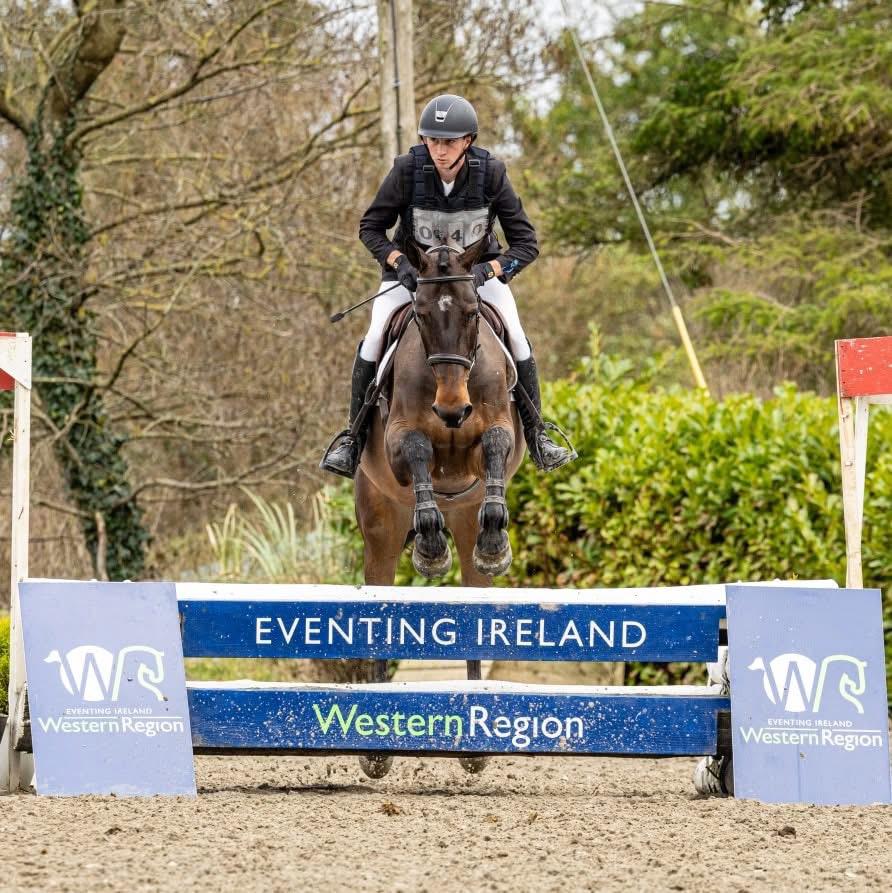Riding For The Team, a new book from Trafalgar Square Books and the United States Equestrian Team Foundation, edited by Nancy Jaffer, shares the experiences of athletes from all eight FEI sports. Among them is this essay from Boyd Martin about his venturesome introduction to sport of eventing. Enjoy!

Courtesy of Boyd Martin.
I went to Pony Club every Sunday. It was a long day, because I had to ride an hour to get there and an hour to get home. We’d spend the whole morning riding on the flat and jumping. I’d tie the pony to a tree when I ate lunch, then we’d barrel race in the afternoon.
My first pony was Willy; his show name was Willy Do It. I must have been about 14 when I entered my first horse trials at the St. Ives showground. I did a pretty ordinary dressage test, fell off twice in cross-country, and once more in show jumping. I think I finished on 380 penalties. While it wasn’t the best start for my eventing career, obviously, I could only improve from there.
But first, I needed a horse, since I was outgrowing Willy. There was a 12-year-old chestnut Thoroughbred for sale. His name was Flying Doctor, and he had never evented. When I tried him out, he came to the jump, stopped, and I fell over the top of him. My parents didn’t know that much about horses, but Dad said we should buy him, because unlike Willy, he didn’t run away when I came off.
When I competed, I wore my high school’s blue-and-white rugby jersey, and I still do today. My mum has to go to the high school I attended and buy another every time I need one. At school, I was a little wild and out of control. Obviously, I wasn’t going to be an accountant. Lucky for me, I loved sports. Not once did my parents say I should consider university. It’s such a big deal in America, but it never crossed my mind to think about that.
So when I finished high school at age 17, I packed my bags and moved into a bunkhouse at the New South Wales Equestrian Center with 14 other young riders, including Chris Burton, who went on to ride for Australia in the Olympics, and Jock Paget, who did the same for New Zealand. At the Center, where we worked seven days a week from 6:30 a.m. until midnight, I met a guy who really changed my life: Heath Ryan, an absolute lunatic, who I can remember screaming and yelling because he was so passionate about his sport and trying to get the best out of the riders. A dressage and eventing Olympian with two team gold medals to his credit, Heath was one of the hardest-working blokes I ever met.
At 19, I did my first four-star on Flying Doctor. He was probably 19, too. We went down to Adelaide, 22 hours away. Heath refused to let anyone else drive, even though he was rolling the window down trying to keep himself awake. I didn’t have a clue as to what I was doing when we went to Adelaide. I didn’t even know about walking the distances between fences to try and figure out the striding.
The first guy who gave me a horse to ride had just gotten out of maximum-security prison for attempted murder. We always went to the farm via the police station because he had to sign in every day. But when you’re starting out, you grab whatever horse comes your way.
I got the ride on a Prix St. Georges dressage horse that was barking mad. The owner wanted me to take the horse to a show that was a six- or seven-hour drive through the Outback, because she thought if we got a good result there, she would be able to sell him. It was raining, he put his head down and bucked, and the reins slipped through my hands. I fell off underneath him and broke my knee in nine places. It took an hour for the ambulance to get there. There were no doctors; there was no pain medication. They took me to a hospital where I was put in a room with a prisoner who was handcuffed to a bed.
In those days, I charged $20 a ride, so I told the horse’s owner she owed me $620 for 31 rides. She didn’t think I should charge for the dressage show, telling me, “You weren’t really on him that long.”
This excerpt was adapted from Riding for the Team from the USET and edited by Nancy Jaffer, and reprinted with permission from Trafalgar Square Books (www.horseandriderbooks). The book is also available directly from USET here.
























